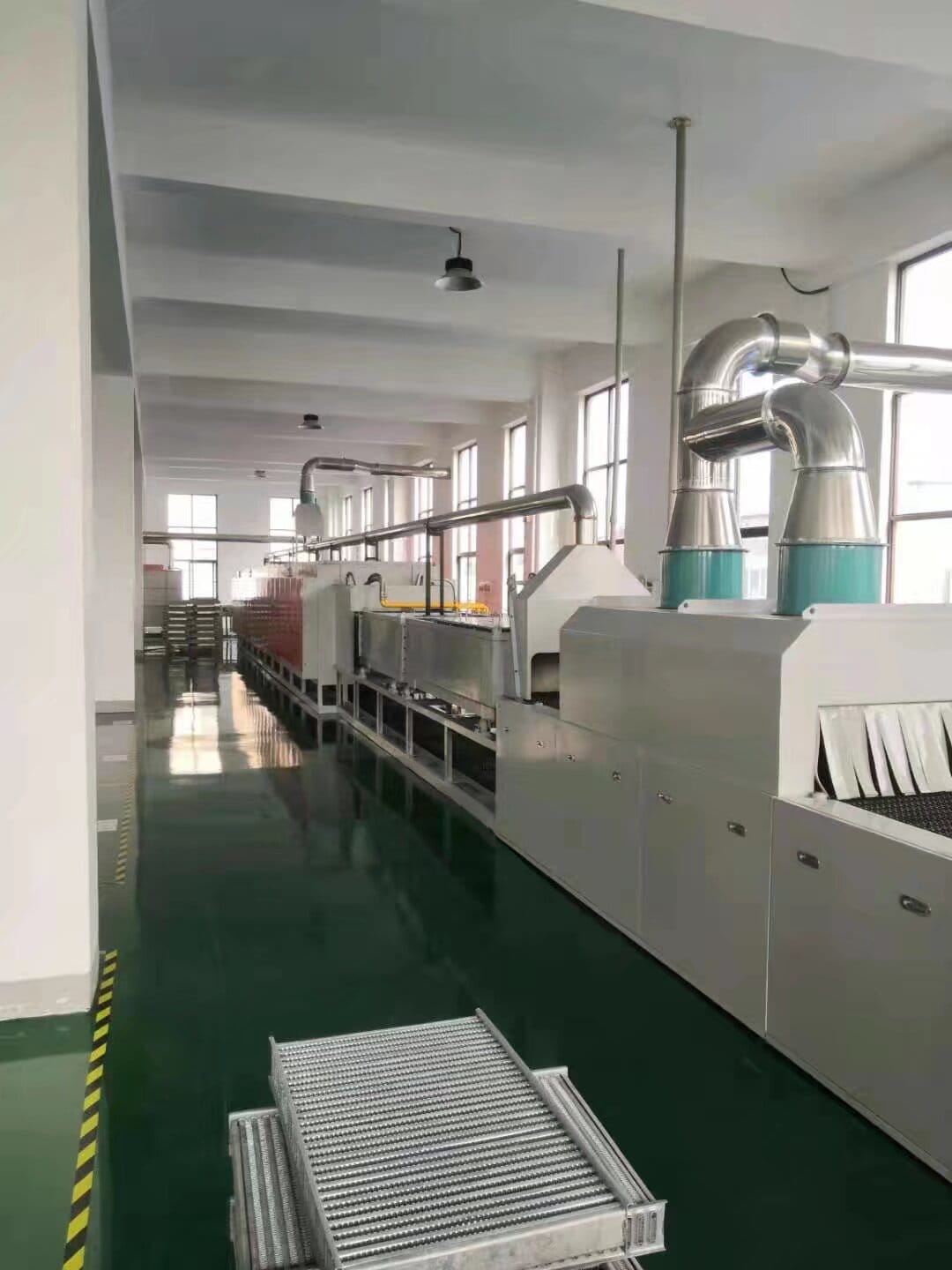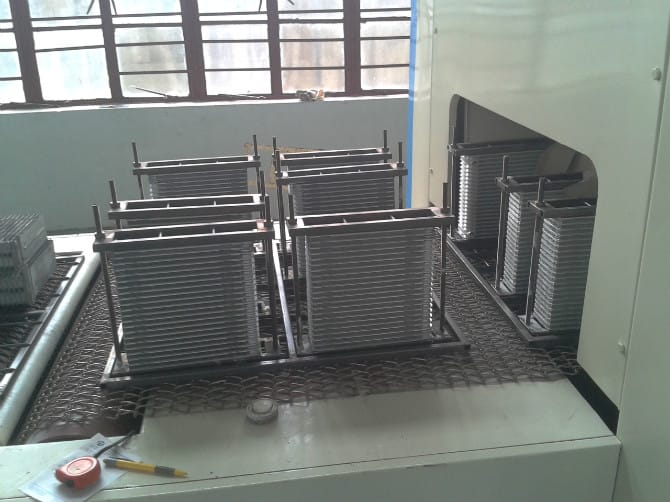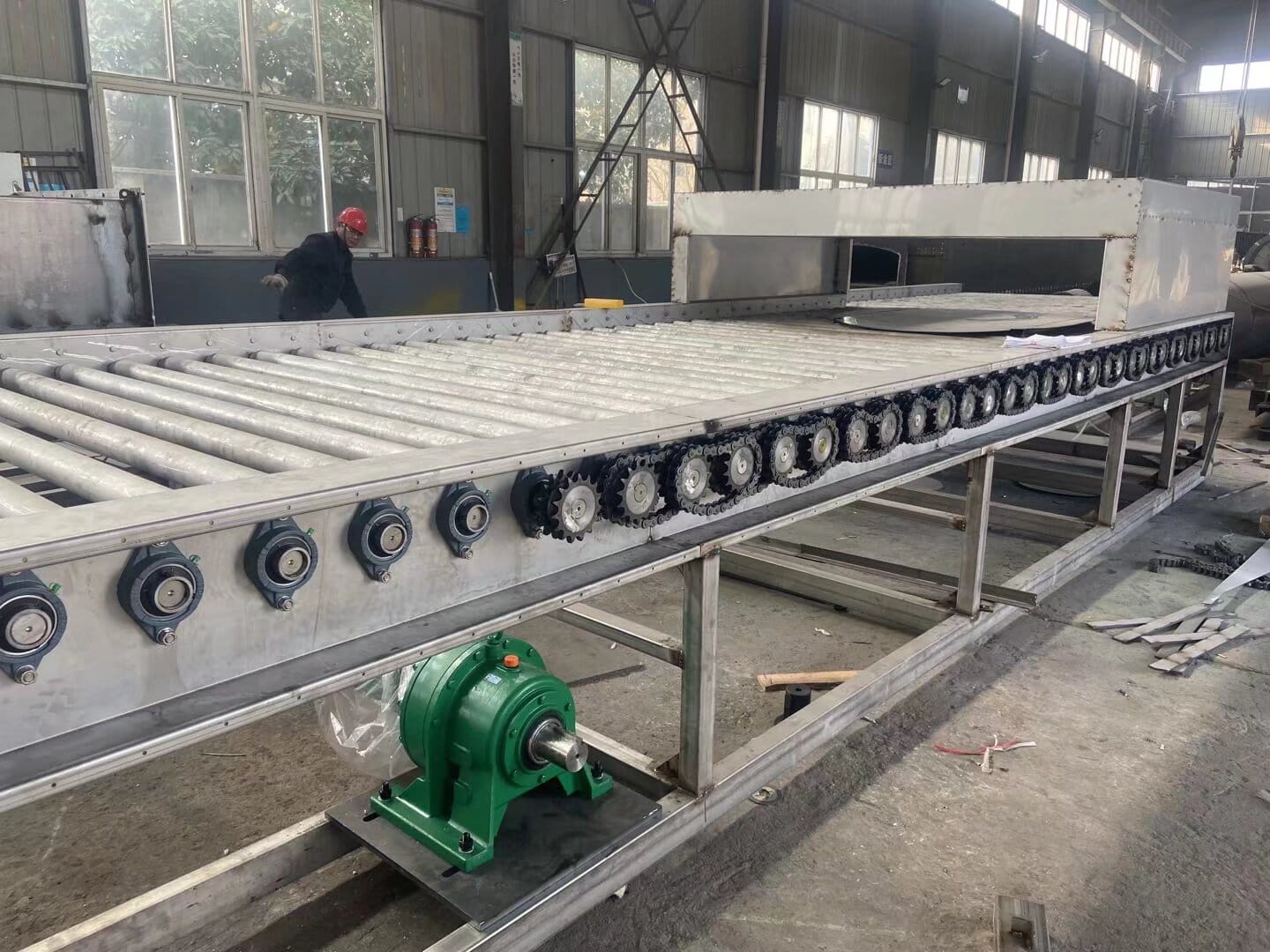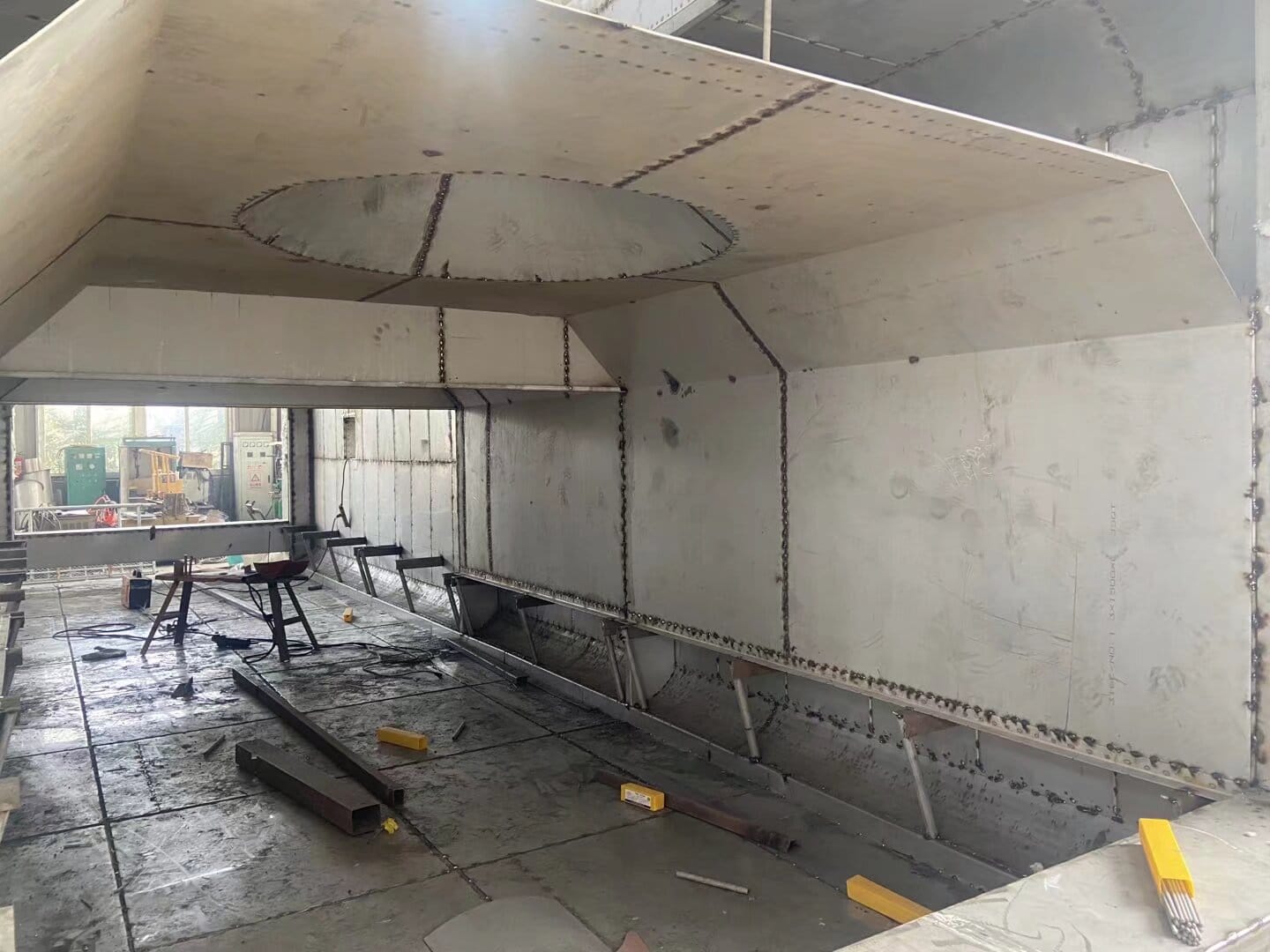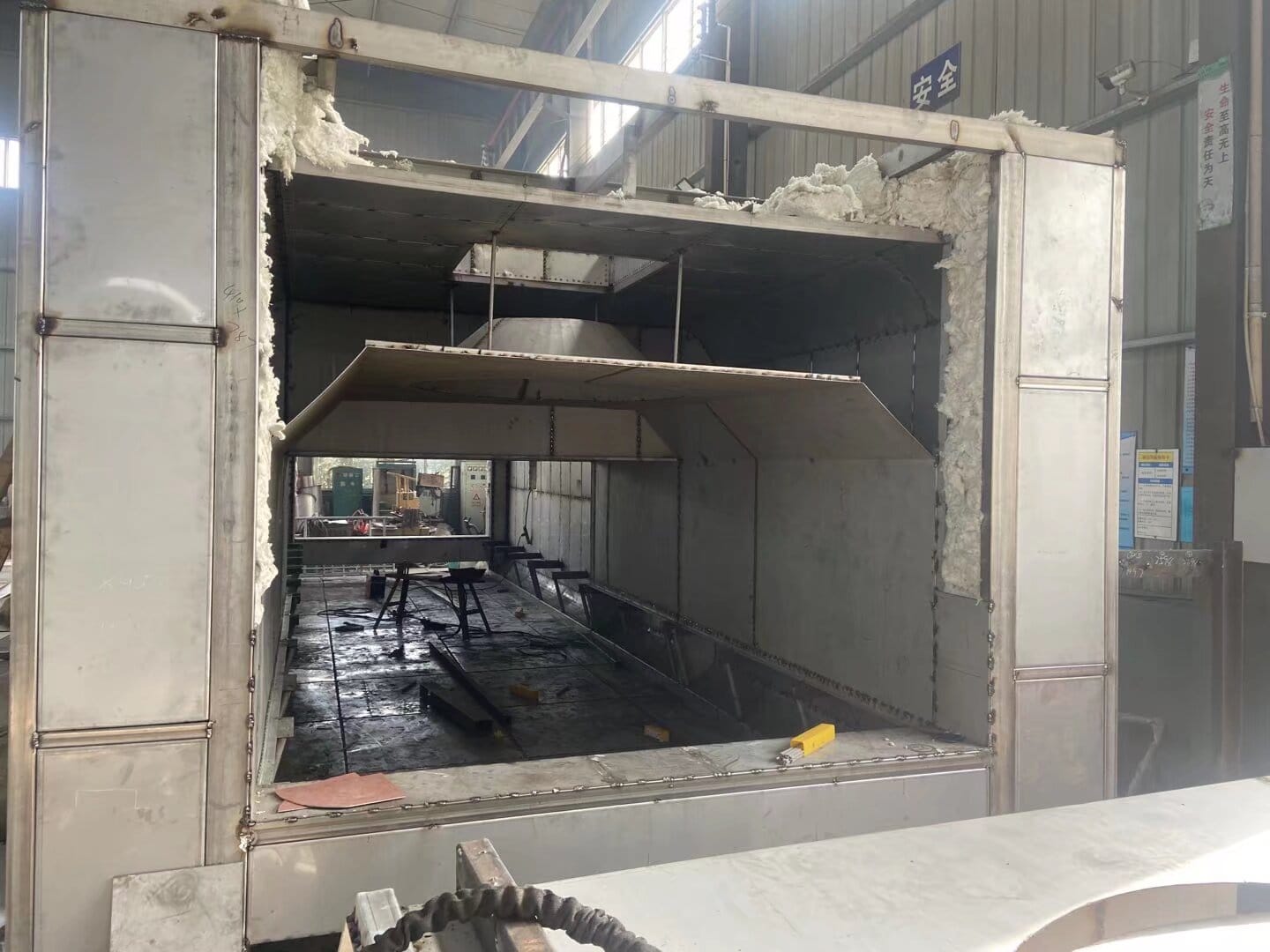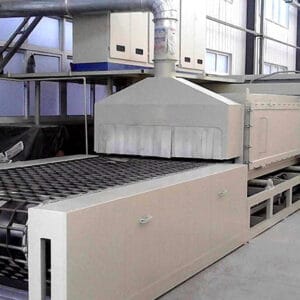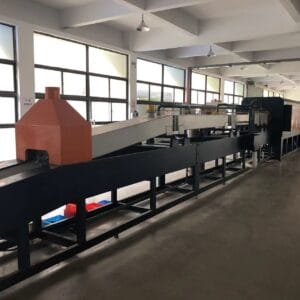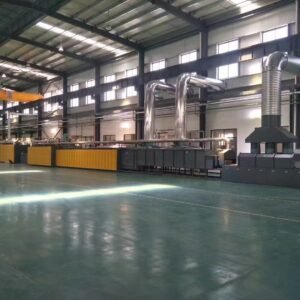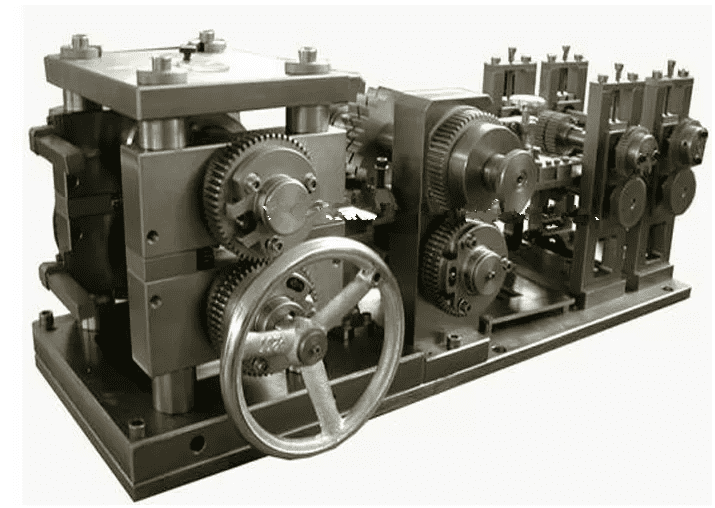The automotive aluminum radiator brazing furnace is an industrial heat treatment facility specifically designed for the mass production of aluminum alloy heat exchangers (such as automotive radiators and condensers). It is used for brazing aluminum radiators. Its core process is to achieve precise metal-to-metal connections in a protective atmosphere or vacuum environment.
Brazing Principle
In the temperature range of 580°C–630°C (drying stage 190°C–250°C), molten brazing filler metal (melting point lower than the base metal) penetrates the aluminum alloy joint gap through capillary action, forming a metallurgical bond upon cooling.
Process Flow
- Surface Treatment: Alcohol/acetone is used to remove oil stains, and chemical etching is used to remove oxides.
- Assembly and Positioning: Pre-press the fixture to ensure joint clearance (typically 0.03–0.2 mm).
- Brazing Stage: Nitrode furnace with flux spray, drying, and high-temperature brazing.
- Cooling and Solidification: Forced cooling with high-purity nitrogen and pressure to prevent oxidation.
Automobile Aluminum Radiator Brazing Furnace Structure
Thermal insulation performance
The automotive aluminum radiator brazing furnace production line utilizes high-performance ceramic fiber products to ensure the furnace’s thermal insulation performance. This reduces heat generation while allowing for direct heating (from room temperature to 630°C) in approximately two hours. Programmable step-by-step heating is also possible, with adjustable heating times.
Furnace muffle
The brazing furnace’s muffle (Swedish 316L sheet) is formed in one operation using a large folding machine. The 12-meter muffle is integrally folded, with a single V-groove pressed into the bottom. The integral muffle has only two weld seams on the sides. This integral, one-piece muffle reduces stress and deformation during welding, minimizing uneven heating and uneven deformation during use.
Zone control
The brazing furnace is zoned for top, bottom, front, and rear areas. Power and voltage control ensures extremely high temperature control accuracy (±1°C). Temperature uniformity in the brazing area is maintained within ±2°C, ensuring the sensitive and specialized temperature requirements of the brazing furnace.
Temperature control
Temperature control is implemented by an intelligent temperature controller using PID regulation, ensuring uniform temperature rise. Over-temperature alarms and PID proportional-integral-derivative control are available. The mesh belt is steplessly regulated by a frequency converter. The transmission starts with acceleration and stops with deceleration, reducing instantaneous stress on the mesh belt. Overload emergency stop and alarm functions are also available.
Operating system
A human-machine interface (touch screen) ensures simple on-site operation. RS485 communication is implemented between the instrument and frequency converter, enabling instrument temperature settings, temperature readings, and frequency converter settings. Temperature curves and mesh belt speeds for at least seven zones can be recorded in real time, with data download, processing, and analysis. Fault alarms, display, and recording are also available for various fans, mixers, and mesh belt conveyors.
Spray chamber
All surfaces in contact with the flux in the spray chamber are made of stainless steel, with glass observation windows installed on both sides for continuous observation of the flux spray status. The spray nozzles use a 90-degree downward fan nozzle to prevent clogging. A filter is installed during flux recovery to remove flux residue and prevent damage to the spray pump.
Air cooling chamber
The air-cooling chamber is equipped with a slag cleaning chamber. Through the side door of the cleaning chamber, residual flux in the brazing furnace can be cleaned. Compared with water cooling, air cooling is not corroded by water, does not cause serious deformation due to hot and cold conditions, and does not require circulating cooling water.
Equipment power
Power consumption during heating: 100%, operating power during brazing: ≤60%
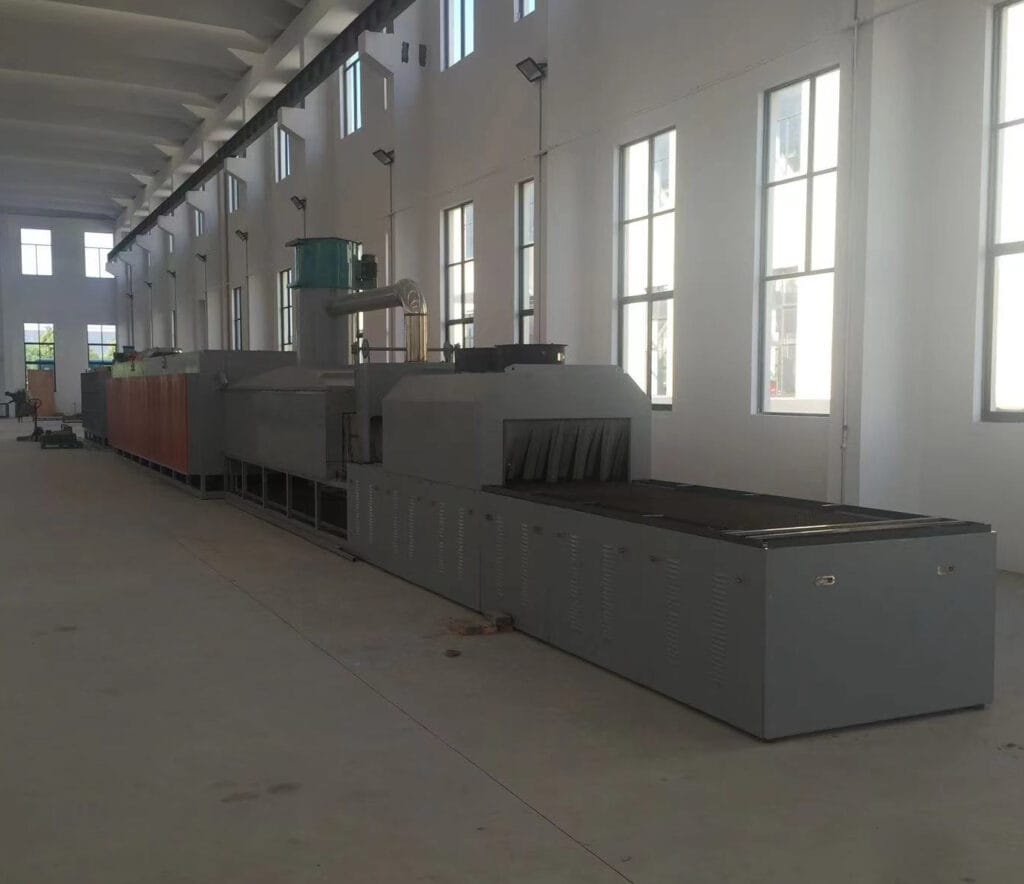
Performance Specifications of Automobile Aluminum Radiator Brazing Furnace
Furnace dimensions: 10,500 mm (L x W x H) (10,000 mm x 250 mm) (customizable).
Production capacity: 80 units/hour (based on workpieces measuring 550 mm x 600 mm x 100 mm).
Drying operating temperature: 200-220°C (adjustable), with a temperature difference of ≤ ±5°C across all furnace locations, controlled and displayed by a temperature controller.
Brazing operating temperature: 600-620°C (adjustable), with a temperature difference of ≤ ±1-2°C across all furnace locations, controlled and displayed by a temperature controller.
Heating power: Electric heating power: 480 kW.
The automotive aluminum radiator brazing furnace features excellent heat preservation. After 24 hours of continuous operation, the outside temperature of the furnace remains no higher than 15°C above room temperature.

